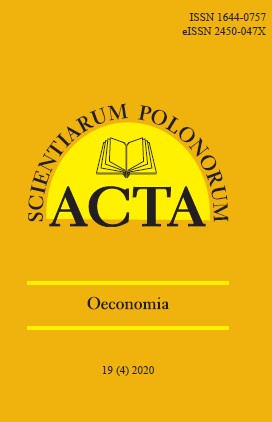THE FLU: AN ANALYSIS OF ECONOMIC COSTS AND MORBIDITY RATES IN POLAND IN THE PERIOD 2013–2019 USING ADAPTIVE PREDICTION METHODS
THE FLU: AN ANALYSIS OF ECONOMIC COSTS AND MORBIDITY RATES IN POLAND IN THE PERIOD 2013–2019 USING ADAPTIVE PREDICTION METHODS
Author(s): Monika Zielińska-SitkiewiczSubject(s): National Economy, Supranational / Global Economy, Health and medicine and law, Present Times (2010 - today), Socio-Economic Research
Published by: Szkoła Główna Gospodarstwa Wiejskiego w Warszawie
Keywords: flu; cost; prediction; creeping trend model;
Summary/Abstract: The flu is one of the most common human illnesses in the world. The number of infections is increasing year after year, and a flu pandemic could cause significant losses in the global economy. The aim of the study is to analyse the economic costs of the flu in Poland and to investigate the number of flu cases with the use of selected adaptive prediction methods. The research was conducted using monthly data collected by the National Institute of Public Health – National Institute of Hygiene for the period from January 2013 to December 2019. Three forecasting methods were used to perform the analyses: the moving average model, the Winters multiplicate model and the creeping trend model. The research results indicate that it is possible to use the creeping trend model to generate short-term prognoses for the flu. In addition, implementing programs to improve the effectiveness of flu prevention in Poland will help reduce the negative health, social and economic effects it creates.
Journal: Acta Scientiarum Polonorum. Oeconomia
- Issue Year: 19/2020
- Issue No: 4
- Page Range: 139-146
- Page Count: 8
- Language: English

